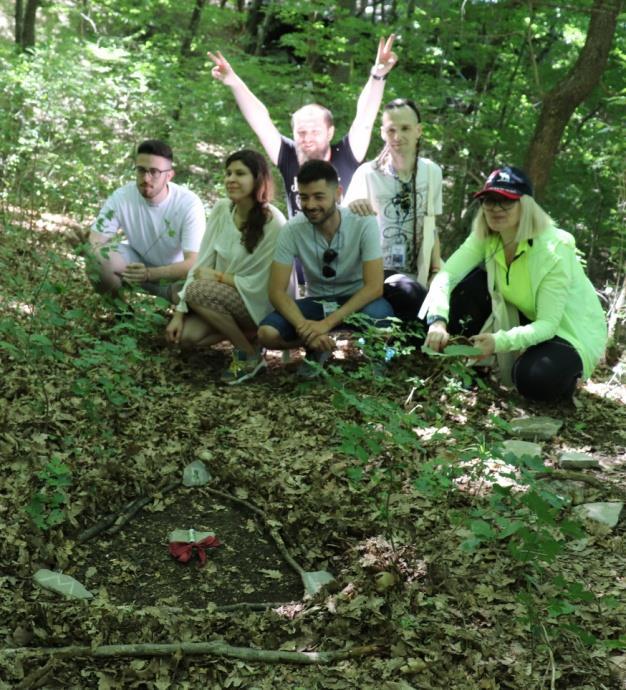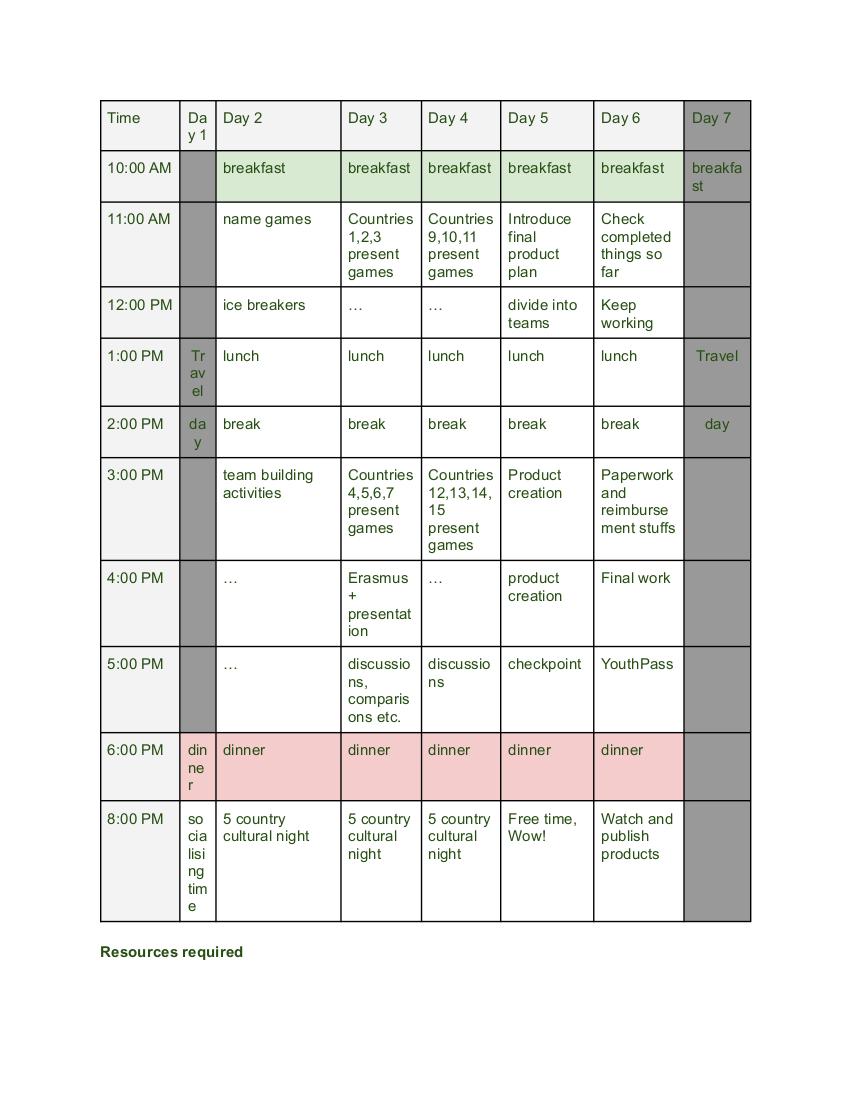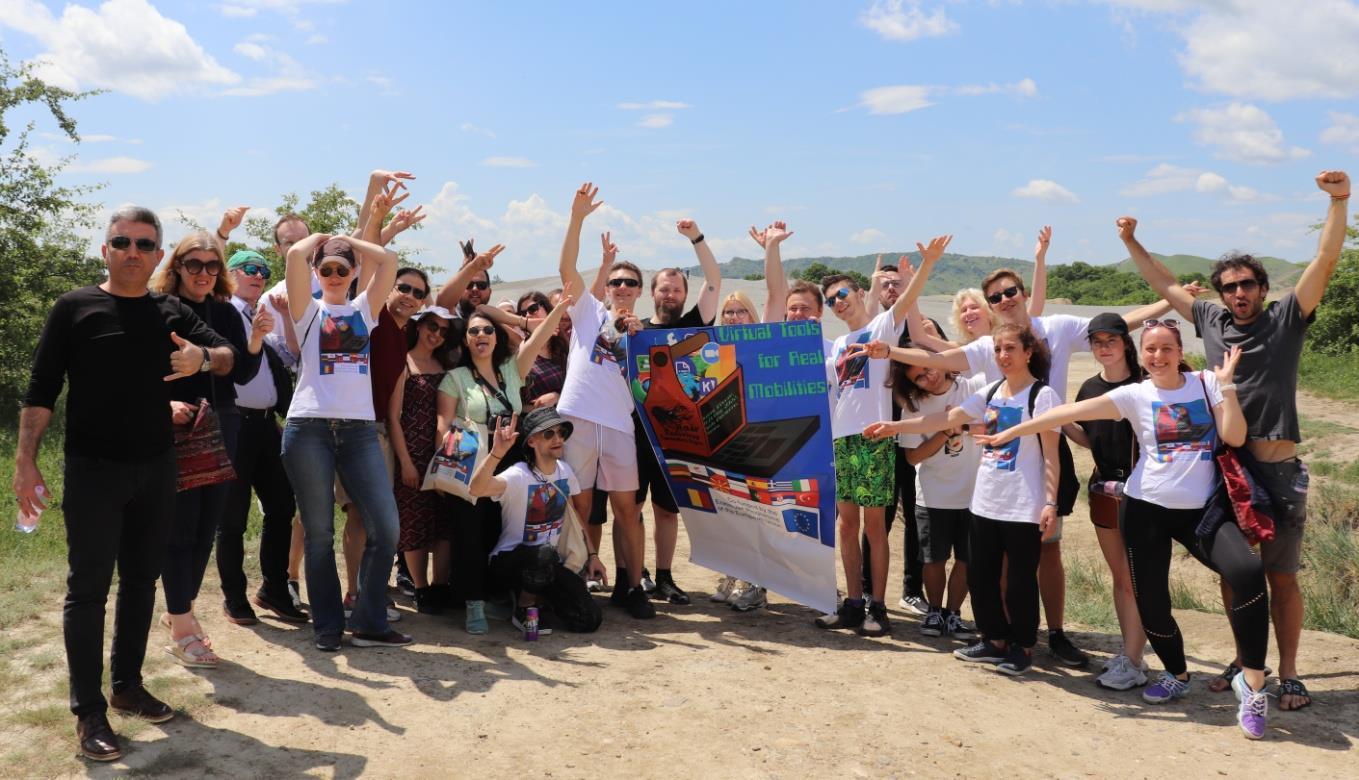

Description of the project:
"VIRTUAL TOOLS FOR REAL MOBILITIES" was a training course that took place in Sarata Monteoru and Buzau, Romania between 19-28 may 2022 with 32 participants and 4 experts.
The aim of the project was to provide to youth workers new digital methods and tools to apply in management of preparation and implementation of Erasmus + youth mobilities
The methodology was based on nonformal education methods including presentations, world café, six thinking hats, fish market etc .
Main results of the project were new competences in writing and management projects, a collection of new virtual tools that can be applied in real mobilities and six ideas of future projects, some of them developed and applied to increase cooperation between partners.
The success of the project stayed in good preparation and dedication of the participants in sessions but also the good relations established between them that created a good communication and interaction in informal moments.
We express our gratitude to all our partners and to our host at Casa cu Tei Monteoru and Hotel Sport B90 Buzau
Catalina and Tolea Postovei – project coordinators“ I had the opportunity to take part as a facilitator in our first project as accreditated organization. I am a member for more than 10 years of Hair Redivivus and I was participant, group leader or facilitator in all kind of mobilities, all of them being appreciated by the participants from all over the world especially because the programmes were always very effective, with semnificant activities and full of energy.
The group was very eclectic, with participants that had very different and interesting personalities and experience, being able to exchange good practice and make wonderful results. Everybody was very motivated to work in teams and to learn even more information about Virtual Tools for real mobilities. It was clear to me that i have been dealing with creative young people and even old representatives or leaders of the sending organizations that want to share beautiful ideas about how to make more visible their work with youth in each country. It's important that all of them were drawn by the same thing : it's compulsory to manage a project by implementing online tools each and every step of the way to cope with the expectations nowadays.
We were excited that one of our projects had a very good impact once again, that we could spend time and share our knowledge with beautiful participants and, nevertheless, that we build friendships and a useful network with their organizations for the next projects yet to come.”
Diana Stancu – facilitatorGETTINGTOKNOWEACHOTHER…
It is not easy to turn a group into a team. This training gathered people from 14 countries with different backgrounds, experience, age and expectations. As some of them started discussions even before project using facebook group or what’s up power of communication, it was easier to bond together when they met in otopeni airport and then things went smooth.
A main role belong to the team of experts that managed to come up with energizers, exercises, evening activities to keep everyone connected to aim of increasing the group dynamics. Working every sessions in first days in small different groups and having evening reflection in other groups made everuone know and interact with everyone. Outdoor exercises, land art in special, world café, six thinking hats, intercultural evenings were important steps in connection and then working in “fish market” teams made our tasks be fulfil fluent and with smile on our faces, everone getting a role in the team.
The benefits are reflected in our activity and daily work with youngsters that could learn from each of us how to manage a project, how to organize activities, how to use virtual tools in every phase of a project.
And moreover the new connections and partnership that were created will contribute to build new projects in Erasmus +.

LANDARTINTHEFOREST
Land art is a powerful tool to stimulate creativity, to develop team spirit, to work in nature and to understand some facts of the topic of the project. Being in wonderful nature and fresh air we had the chance to create some “masterpieces” and to assimilate a method easy to use back home.


Our art piece represent the often dreaded window of Zoom/Google meet or whatever else schools and organisations used for roughly 2 years in order to hold meetings or classes. However, the rocks are all in different colours, shapes, and sizes, with different angles or smoothness. This represents that even if in real life we were mostly all the same sized squares with cameras often turned off, we all nevertheless come in different colours, shapes, and sizes much like the rocks do. It is a metaphor, and very poetic.
We created an installation to describe how the signal is transferred from the source to beneficiaries and to make clear that if the message is not clear or the ways are corrupted then information is lost
We used materials found in the forest (without harming the nature) like branches, leaves, stones, dry fruits, even pieces of garbage to express our perception about why “virtual tools” are important in our youth work. Our “pieces of art” expressed what competences should have a youth worker to manage virtual tools and how important are the connections between every actor involved in a project: management, participants, partners, beneficiaries.


VIRTUALTOOLSBEFORE,DURINGAND AFTERPANDEMICTIMES

Looking in hindsight, it’s clear that was not the best time to have a training and moreover not one about virtual tools. More than 2 years passed since covid 19 started and still people were frightened because of virus and extra was added the war that just started in Ukraine. But we tried to overpass these fears and to forget that most of us were oversaturated with online meetings on zoom and working or learning from home.
But our trainers were so inspired that they transformed efficient the topic into a fluent and fun learning. In the beginning most of us were afraid about long lessons and bla,bla,bla about different tools but in the end turned to be a very good approach of HOW and WHEN to use the virtual tools in mobilities we organize or take part.

Before doing that as a warm up we had 2 session that created a good image of what and which these tools were before covid, during pandemics and at that moment. Working in mixed teams we realized what are common and different aspects in our activities as youth workers and life in general, what we knew and what we discovered. Then using “world café” as a method each of us could contribute to every topic and understand better the situation.



SIXTHINKINGHATS
This was definitely the toughest session of the project. In the beginning it seemed very difficult to understand the aim and the concept but then when we started to “play” everyone was captured by the method and outcomes we created. Participants were jumping from table to table to contribute with their thoughts, to discover the others’ perception and to understand the process and what is the role of virtual tools in our mobilities. The experts were all around to explain every step and to answer to questions and help with fixing the unclear words or terms.
The outcomes were very relevant and part of us already are proud to say that applied this method in our organizations.




FISHMARKET– DEVELOPINGOURIDEAS
The core of our project was the session about how to use virtual tools in real mobilities. There were a plentry of information and methods. In the beginning we had an interactive introspection of what a project is and our trainers together with the more experienced from us: Halil, Mislav, Boghos, Milos helped the others to understand all details.


Then we worked in 6 teams to define some project ideas, to plan activities together and to understand in each phase how can we integrate virtual methods for a better success of the project. Every step had different methodology so we had round tables and debates, we created posters, interviews, told stories, create media components to promote our projects and then everything was packed and ready to be transferred to reality. The projects were about gastronomy, interculturality, environment, upcycling, cultural heritage based on our priorities.

In the last day in Buzau we had the opportunity to visit the offices of EUROPE DIRECT and meet there local youth workers. We presented our ideas and some of them also presented recent projects they participated in and how virtual tools were used in activities, preparation, follow up, promotion. It was a fruitful meeting and was interesting to discover how many projects are happening in Buzau















































INTERCULTURALEVENINGS
It is not easy to gather together 14 different cultures from all corners of Europe, participants with different backgrounds, religions, beliefs but we managed to interact in the best way possible and to use cultural diversity as a tool to integrate and to plan next projects.
We got to know eachother and expressed our hobbies and shared our stereotypes to be aware how to block them. Work in groups was based on respect, tolerance, mutual understanding and equity in sharing the roles of the teams.
The evenings dedicated to promotion of our cultures were extraordinary. Every country had the opportunity to show movies, photos, to present traditional products and to show dances. We enjoyed turkish quiz, greek dances, romanian barbeque, bulgarian digital presentation, latvian sweets, portugues wine etc



‘This project has been funded with support from the European Commission. This publication [communication] reflects the views only of the author, and the Commission cannot be held responsible for any use which may be made of the information contained therein.’



